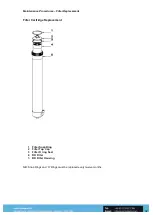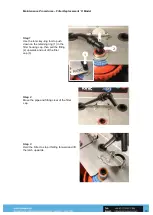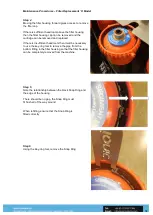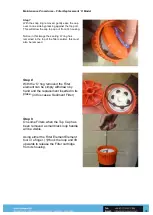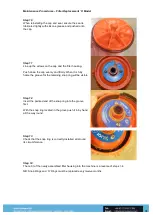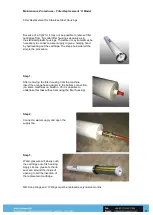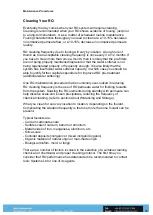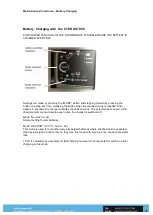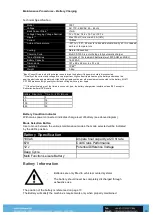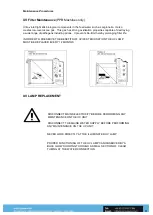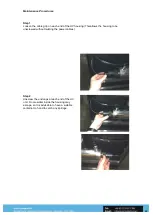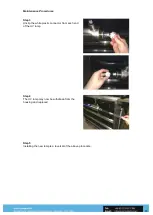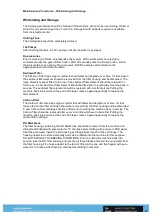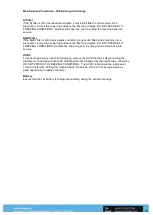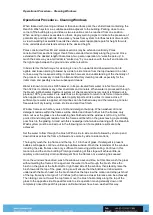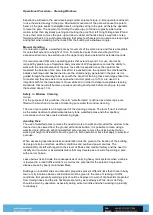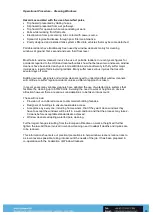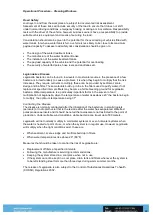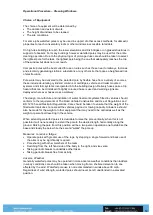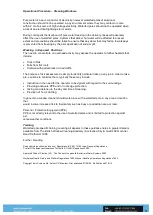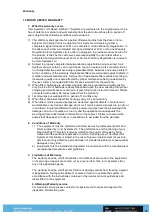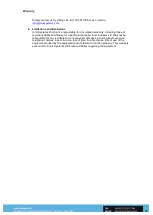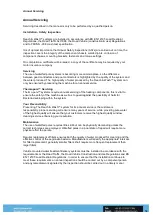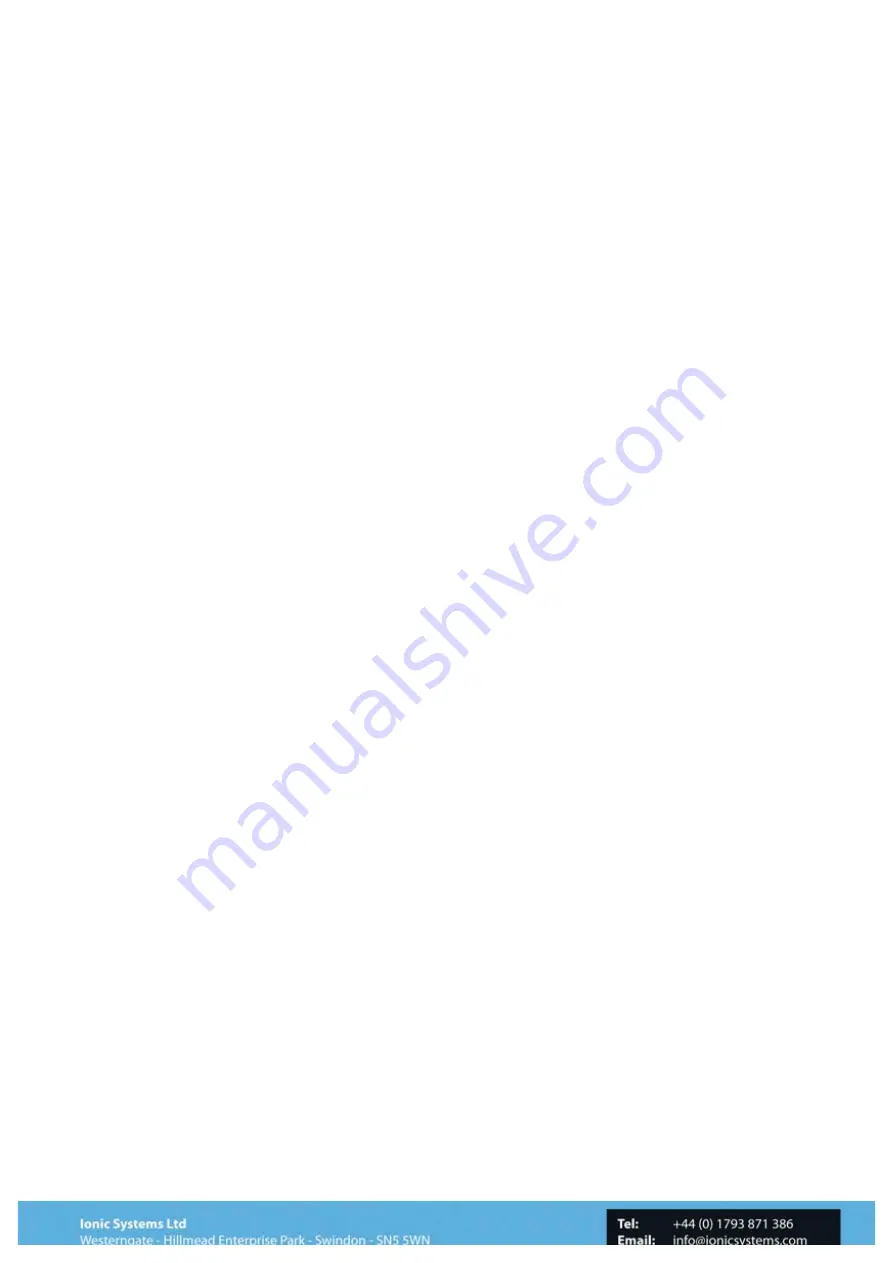
Operational Procedure – Cleaning Windows
46
Operational Procedure – Cleaning Windows
When tasked with cleaning windows or facade surfaces park the vehicle/trailer containing the
Reach & Wash system in a suitable position adjacent to the building. Parking close to one
corner of the building is a good idea as two elevations can be reached from one position.
When working in areas accessible to others, deploy warning signs to indicate the presence of
potential slip and trip hazards. Run delivery hoses from system to furthest extent of work with
a view to working backwards towards the vehicle, select appropriate pole for height for work
to be undertaken and extend sections to the desired height.
Poles constructed from 6ft and smaller sections may be extended vertically. Poles
constructed from sections longer than 6ft are extended horizontally along the ground. Once
extended to the desired length it becomes a two person operation to “walk the pole up” in
much the same way as a tall ladder is “walked up” by one person with the butt end located in
the right angle between the ground and vertical elevation.
In basic terms the technique for cleaning is one of an upwards and downward motion to
agitate and loosen soiling, followed by a side to side motion from the top downward in order
to rinse away the loosened soiling. In practice however and understanding of the chemistry of
the process is necessary in order to attain satisfactory cleaning results, especially for the
initial clean and possibly one two subsequent cleans.
Water is known to most as H20 however, in its pre-treated form water is in fact much more
than h20 as it contains many other chemicals and minerals. When water is processed through
the Reach & Wash water treatment system all chemical and mineral content is filtered out to
produce 100 % pure water. Pure water has a strong desire to return to its former impure state,
when applied to any surface pure water rapidly imports all its purities it comes across. If
sufficient pure water is applied, all impurities can be flushed away and the remaining mineral
free water will dry leaving a clean, sterile and spot free finish.
Window frames can harbor years of dirt and detergent build up. When washed, dirt and
detergent residue within the frames will be diluted and driven further into the frames, only
drain out over the glass once the washing has finished and the window is left to dry
,
At this
point, dirt and detergent residue from the frames will be left on the glass leaving a predictably
poor finish to the glazing. Armed with this knowledge initial window cleaning with the Reach &
Wash system must be carried out in the following manor if acceptable results are to be
achieved:
Set the water to flow through the brush. With a side to side motion followed by short up and
down strokes across the frame, followed once more by side to side motions,
Thoroughly wash the top frame and the top 8 - 10 inches of glass. If detergent is present
bubbles will appear, continue until soap bubbles subside. Wash the remainder of the window
including the side frames once only, sufficient to removing visible soiling. Continue in this
manor around the entire building. Prolonged washing at this stage will achieve little, as
capillary action will only drain soil/detergent from the frames once washing has ceased.
Once the windows have dried, wash the windows a second time, but this time wash the glass
without wetting the frames. One again set the water to flow through the brush. Place the
brush on the glass at the bottom left or right hand side of the window, then steadily raise the
brush towards the top of the glass, doing so will ensure that the bristles curl downwards
underneath the brush head. As the brush reaches the top slow the motion and stop just short
of the top frame by a margin of 1-2 inches (with practice a closer tolerance can be achieved).
Then taking care not to wet the top frame move the brush horizontally along the top of the
glass to the opposite side. Repeat this side to side operation moving steadily down until
completely rinsed. Repeat this process until all windows have been washed this way
.
Summary of Contents for Zero PPB
Page 1: ...1 Operators Manual...
Page 5: ...Zero Weights Dimensions 5 Dimensions...
Page 7: ...Machine Component Identification 7 Component Identification...
Page 8: ...Machine Component Identification 8 Control Panel...
Page 10: ...Machine Component Identification 10 Zero System Filters Removed...
Page 13: ...Machine Component Identification 13 Filter Identification Zero PPB System...

